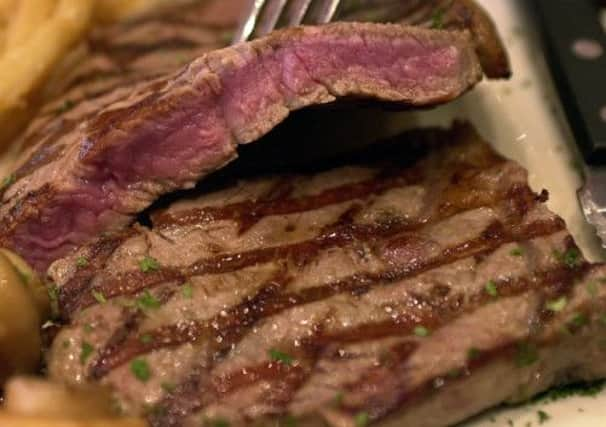Comment: Beef industry needs hand – but standards must not slide


The sympathy is not that these sales people are far from home, nor that they will be on their feet for the next four days – and anyone who has survived a four day stint at a Highland Show knows that is an endurance test.
No, the reason why there should be some consideration to those who are currently selling our red meat is because there is less of it around and consequently it is more costly.
Advertisement
Hide AdAdvertisement
Hide AdThe shortage is a more acute problem than the price, as Scotland has built a reputation for producing top-quality beef and, even in the trough of economic recession, consumers have largely stuck to their beef-eating habits.
One of the features of this recession is that the rich appear to have largely escaped unscathed and this has left a market for premium produce. And, if I believe my local butcher, although there may have been some shift to buying some of the cheaper cuts rather than the steaks and the roasts, customers are still coming through his shop door. So maybe the rise in value has helped increase a more even demand for the different cuts of meat, which must be good news.
The most-recent edition the Farming Leader, the National Farmers’ Union Scotland in-house magazine, highlights the beef shortage issue with a photograph showing a few ghostly cutouts of cattle against an empty background. The article rhetorically asks “Where have all the cows gone?”, adding that some 500 Scottish beef herds have vanished since 2011 and that leaves little over 7,000 farmers in this country producing beef cattle.
The obvious answer as to where the animals have gone is down the road to the slaughterhouse as their owners have either wearied of the seven-day-a-week nature of the job of livestock husbandry, or they have given up the economic battle.
There used to be – and I am sure there still is for many farmers – a great pleasure in seeing a field of prime cattle only weeks away from finishing on grass, but if the bank manager is breathing down the farmer’s neck or the accountant is pointing to the feed bills or the red ink at the bottom of the balance sheet, then a great deal of the aforementioned pleasure evaporates.
But perhaps the biggest single factor in reducing the numbers of cattle on Scottish farms has been the break between numbers kept and subsidies paid. When it came in a decade ago, the Single Farm Payment was hailed as the biggest advance in farm support as it allowed farmers the freedom to choose what crops they produced and what stock they kept.
But farmers soon realised you got the same amount of cash for pulling on your slippers and sitting down at the fireside as you did for putting your feet into soggy old wellies on your way out to feed the cattle on some dreich day.
And yet even now having realised that too much money is escaping out the support system, the forthcoming version of the Common Agricultural Policy does little to stimulate production through subsidy.
Advertisement
Hide AdAdvertisement
Hide AdThe Scottish Government will, I would hope, use the leeway it has to link as much support as possible to producing more beef. The route it will use will be the Beef Calf Scheme – which, incidentally, many in the industry opposed when it was introduced.
I do not personally believe sufficient cash can be put into the beef scheme to make producers who have given up reverse their decision. If there are to be more cattle come forward, it might be with the big efficient producers increasing their herds.
It could also be we are not witnessing an inexorable decline in the national beef herd. We could just be at the base of an economic cycle and, with lots of new entrants shortly to get on an equal footing in the subsidy stakes, more cattle producers could come along.
If that is a possibility, then the Scottish Government might consider a scheme where “soft” bank loans for cattle producers could help overcome the considerable capital cost hurdle the enterprise entails.
There is also talk of diluting the standards for cattle qualifying for the Scotch Beef label but I hope this does not happen, as that label is a big selling point, including for those at Anuga this week, and any link with poorer quality beef could easily undermine the hard-won reputation.